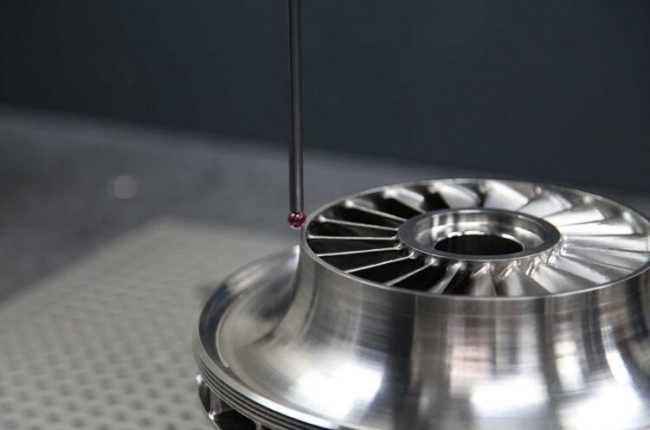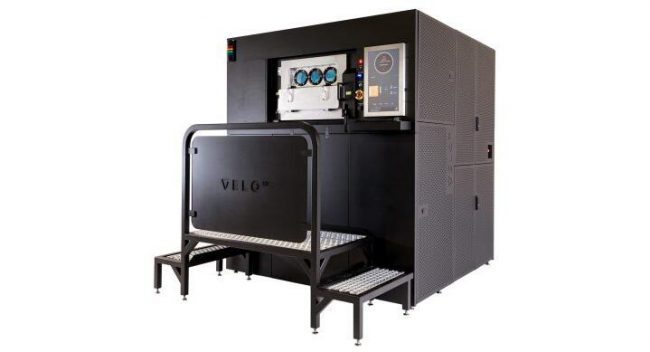Next-Generation Additive Manufacturing Shrouded Impellers
The intricate power generation systems that fuel the country are driven by some of the most complex machinery in the world. Hundreds of parts contribute to the greater ecosystems of power generators, each carefully engineered to deliver critical functionality. Hanwha Power Systems, a total energy solution provider that has developed high-efficiency power generation systems with turbomachinery, compressors and expanders since 1997, is one of the many energy companies focused on using additive manufacturing as a tool for these parts.
Additive manufacturing (AM, aka 3D printing) offers the speed and geometric freedom critical to efficient rapid prototyping. Its particular value to the energy, oil and gas industries is the ability to shorten the development cycle of components.
Hanwha has been using additive manufacturing since 2013 for rapid prototyping of test parts, including the 3D printing of centrifugal impeller wheels. The two-year project delivered the mechanical reliability they were looking for in the prototypes with the added advantage of fast turnarounds. The success of the centrifugal impeller wheel prototypes drove Hanwha’s interest in additive manufacturing because it opened additional design freedoms for their design team, sparking a renewed effort to better quantify the material properties and capabilities of additively manufacturing parts.

![]() Finding the Right Partner
Finding the Right Partner
During the material qualification efforts, Chad Robertson, Senior Engineer at Hanwha, attended a presentation from Stratasys Direct Manufacturing on 3D printing metal powder reuse. The presentation, given by Sr Manufacturing Engineer Andrew Carter, demonstrated the expertise Hanwha was looking for in a partner. They reached out to Stratasys Direct for the development of a commercialized titanium shrouded impeller.
“We went to many vendors during the quoting process, and Stratasys Direct showed they were very technically sound. They came up with the most questions about our specifications and worked with us through our requirements and post-processing vendors to come up with a solid process we felt comfortable with,” said Robertson.
Following a successful project, Hanwha contracted Stratasys Direct to work on a shrouded impeller prototype for a radial expander in a power generation application.

![]() Designing Next-Generation Energy Applications
Designing Next-Generation Energy Applications
Robertson and his team were developing a high-efficiency power generation cycle to couple with a concentrated solar power application utilizing a Supercritical CO2 (s-CO2) Brayton cycle (RCBC). S-CO2 is a fluid state of carbon dioxide that is held above its critical pressure and temperature to allow for the pumping power in a compressor to be reduced, thus significantly increasing the thermal-to-electric energy conversion efficiency. The overall system works by transferring heat from a large solar ray into a working fluid (CO2) that is expanded through a series of radial expanders to extract power. A series of cooling, recompressing and reheating creates power that is delivered to the grid.
To save time and money on the overall project, the Hanwha team developed a complex shrouded impeller prototype to test in one of the radial expanders. Initially, Hanwha attempted to print the design with Direct Metal Laser Sintering (DMLS), a popular metal powder bed fusion 3D printing technology. DMLS is a type of Direct Metal Laser Melting technology that 3D prints by micro-welding powdered metal and alloys with a high-wattage laser and, like many 3D printing technologies, builds temporary support structures under design elements that overhang.
The height of the impeller’s design caused interference with the 3D printer, and the design’s internal hollow passages required significant support structures to fixture the part during build. Previous projects with other vendors had shown Hanwha that the removal and clean-up of support structures was labor-intensive and, in some sections, impossible.
Additionally, the 3D printed part would have to go through significant secondary operations to meet Hanwha’s specification. Robertson and his team needed to work with a manufacturer that could handle both 3D printing and additional secondary operations so that when they received the final part, they could start testing right away.
![]() Printing with State-of-the-Art AM Systems
Printing with State-of-the-Art AM Systems
Hanwha collaborated with Stratasys Direct Manufacturing to manufacture the shrouded impeller prototype with DMLM (direct metal laser melting) 3D printing in Nickel Alloy 718 and several post-processing operations. In the early stages of development, they had attempted to 3D print a Nickel Alloy 738 impeller but encountered some build issues. They concluded that the material required more development for the 3D printing process. Nickel Alloy 718 proved to be a good alternative for their prototype impeller as it had similar properties to 738 and could handle the rigorous testing and expected test life of their part.
Stratasys Direct offers Nickel Alloy 718 on a state-of-the-art DMLM 3D printer from VELO3D. The 3D printer successfully builds geometries with low angle features and low-to-no support structures, thus broadening the capabilities of the technology to serve complex designs – a great fit for shrouded impellers like the one from Hanwha.
Surfaces between 12-45 degrees from horizontal no longer need support structures, and in select cases, components can be build suspended in the powder bed. The system can build robust yet thin walls – a key benefit for applications where heat transfer is important and long thin walls separating narrow channels are the basis of the design.
“Five years ago, additive manufacturing may not have been able to print this geometry successfully,” said Eric Mutchler, DMLM Product Manager at Stratasys Direct. “But due to the rapid advancement of metal AM, what wasn’t achievable before, we’re now able to produce.”
Hanwha wasn’t looking for a part straight off the 3D printer. They needed a turn-key product that met their specifications with both 3D printing and the required secondary operations handled by one company. After the 3D printing process, the impeller prototype also required certified heat treatments, CNC machining, surface grinding, extrude honing between the blade passages and mechanical and material testing, as well as unique inspection operations. Stratasys Direct handled most of the post-processing operations in-house and sourced additional vendors to cover the remaining steps so that in the end, Hanwha received a finished product ready for testing.
![]() Providing Advanced Services for Turn-key Products
Providing Advanced Services for Turn-key Products
Hanwha chose to use additive manufacturing for their application because they found the process to be the most cost-effective path forward to produce this high-performance component. By providing the metal 3D printing technology necessary to build a complex part, Stratasys Direct was able to meet their design specifications.
“Without being able to remove that support material, we wouldn’t have had a functional part. When Stratasys Direct came forward with the technology that allowed significantly reduced support structure, that increased the success rate of building these parts,” said Robert Pelton, Engineering Manager at Hanwha.
Ultimately, Hanwha got what they were hoping for – a collaboration with a knowledgeable supplier that could help them develop a quality part. The team at Hanwha acknowledged that thorough project management from Stratasys Direct, including regular updates, vendor organization and diligence with their specifications, was extremely valuable.
Karl Wygant, Chief Operating Officer at Hanwha said, “That’s a really important part. That adds a lot of value to us. We’re working collaboratively to develop a higher caliber part. Having that feedback is critical for us.”
Moving forward, Hanwha will continue to explore additive manufacturing for cost-efficiency and part optimization. The advanced metal additive manufacturing process has eliminated some of the prohibitive post-processing work that would have been required on with another manufacturing system, which in the long run translates to lower costs. At the end of the day, Hanwha is interested in final parts that benefit from this kind of technology.
Source: Stratasys
For press release, welcome to send to 3D Science Valley at 2509957133@qq.com




Recent Comments